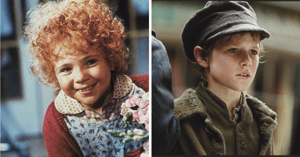Juvenile Justice caseworkers manage cases for "best case" outcomes and "case closed" status. When they are assigned a client, the case worker monitors and supports that youth from their first offense through juvenile court, detentions and residential or other out-of-home placements. The progress of a youth through the juvenile justice system is often long and arduous from intake, booking, and registration to court action, fines, detention, sentencing, probation, and residential placement. Frequently, these same youthful offenders are "cross-over" cases that have come to the attention of both child protective services and juvenile justice case workers.
Topics: Juvenile Justice, social workers, what social workers do
Social Workers Fight for Juvenile Justice...Part 2 How We Got Here
Your response to last week's blog on the social worker's role in juvenile justice was overwhelmingly positive but many of you thought that the issues might be better clarified in context. So, let's try to put juvenile justice in some historical perspective.
Topics: Child Welfare, Juvenile Justice, social workers, what social workers do
Advocating For Youth Social Workers in Juvenile Justice
- During a single year, an estimated 2.1 million youth under the age of 18 are arrested in the United States.
- Though overall rates have been declining over the past years, approximately 1.7 million delinquency cases are disposed in juvenile courts annually.
- Youth are referred to the juvenile justice system for different types of offenses.
- The majority of youth processed through the juvenile court are adjudicated (i.e., declared by a judge to be) delinquent, for most offenses.
Topics: Child Welfare, Juvenile Justice, social workers, what social workers do
Drug and alcohol use remains a severe problem among school age children, with the National Institute on Drug Abuse showing that 5.4% of 8th graders, 9.8% of 10th graders, and 14.3% of 12th graders use illicit substances, and nearly 1.3 million teens have a substance use disorder. Unfortunately, recovery treatment is often unsuccessful when teens return to their schools and are surrounded by the same peers and the same opportunities to use. Data shows that nearly 70% of students who attend recovery and return to their school will relapse in 6 months or less.
Topics: Juvenile Justice, mental health, education, social issues
Since 1977 when Annie opened on Broadway, theatrical artists have been portraying endangered youth who have experienced both maltreatment and engaged in delinquent behavior like Oliver Twist and Little Orphan Annie.
Oliver! and Annie, two of Broadway’s most iconic musicals, star two children caught between Juvenile Justice and Child Protective Services.
Topics: Child Welfare, Juvenile Justice, Family and Child Welfare
Case workers in Juvenile Justice have long been concerned about a subversive movement in the back halls of Congress and many state houses to erase any distinction between young offenders and adult criminals. As recently as the 1990s almost all 50 states overhauled their juvenile justice laws, allowing more youths to be tried as adults and scrapping long-time protections to help rehabilitate delinquent kids and prevent future crimes. Only ignorance of the history of juvenile justice in United States could be responsible for a now subdued but continued movement to “simplify” criminal justice by merging juveniles and adults together in the eyes of the law. May we take a moment to remind everyone how our juvenile justice system evolved to its present effective state.
Topics: Juvenile Justice, caseworkers, social justice
Federal Advisory Committee on Juvenile Justice To Hold Virtual Meeting
On November 18, 2020, from 10 a.m. to 12 p.m. ET, the Federal Advisory Committee on Juvenile Justice (FACJJ) will hold a virtual meeting. Composed of members of state advisory groups on juvenile justice, the FACJJ advises the President, Congress, and OJJDP Administrator on matters related to juvenile justice, and evaluates the progress and accomplishments of juvenile justice activities and projects.
Register to attend.
Topics: Juvenile Justice
COVID-19 Diagnoses in Juvenile Facilities
Known Cases as of June 24
658 youth, 771 staff
Annie E. Casey Foundation
“If there was ever a good time to make sure that not a single young person spends a single day in detention or placement unless there is an immediate and severe risk to community safety, this is it,” says Nate Balis, director of the Annie E. Casey Foundation’s Juvenile Justice Strategy Group. “This is the time for juvenile justice agencies to scrutinize every detention and placement decision and to review — if not reconsider — every policy that leans toward confinement.”
Topics: Juvenile Justice, social justice, Covid-19/Pandemic
Today, we all work in silos with our heads down and our noses to the grindstone. This self-imposed isolation adds to the burn out rate in social services. This blog hopes to offer you a refreshing break from the intensity of your service – “Think of reading this blog as a refreshing “glance around the room” looking for inspiration and encouragement from your colleagues who, like you, have dedicated their lives to the service of society’s most vulnerable.”
Topics: Juvenile Justice
The Headline
After years of writing about the mass incarceration of Americans, it gives us great pleasure to share this headline with everyone in the social services community.
Topics: Juvenile Justice, Government, social justice, Adult Re-Entry










